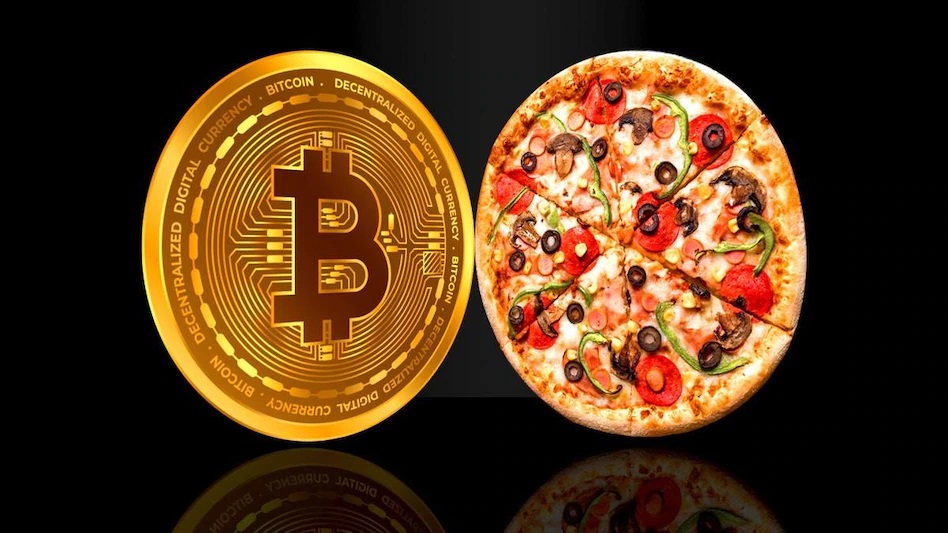On May 22, 2010, a seemingly mundane transaction in Jacksonville, Florida, became a legendary milestone in cryptocurrency history: programmer Laszlo Hanyecz completed the first documented real-world purchase using Bitcoin, trading 10,000 BTC for two pizzas from Papa John’s. This exchange, now celebrated annually as “Bitcoin Pizza Day,” marked the moment when Bitcoin transitioned from a theoretical digital token to a medium of exchange with tangible value. On that day, Hanyecz handed over what was then worth about $41 for a pair of large pies, unknowingly setting a precedent that would echo through the crypto world as a symbol of its early, experimental spirit.
The story began four days earlier on May 18, when Hanyecz, a 30-year-old Bitcoin enthusiast and early miner, posted a now-iconic thread on the BitcoinTalk forum: “Pizza for bitcoins?” He offered 10,000 BTC—roughly half his stash at the time—to anyone who’d deliver or order him a couple of pizzas, specifying, “I like things like onions, peppers, sausage, mushrooms… just a standard pizza.” For days, the thread languished as forum users debated the logistics, with some joking about the absurdity of spending digital coins on food. Bitcoin, then 16 months old, had no established market value; its price was loosely pegged to electricity costs, hovering at $0.004 per coin based on recent trades on the Bitcoin Market exchange. By May 22, a breakthrough came: a 19-year-old British user, Jeremy Sturdivant (username “jercos”), took the deal, ordering two Papa John’s pizzas online and having them delivered to Hanyecz’s doorstep.
The transaction unfolded with a mix of geeky excitement and casual nonchalance. On May 22, Hanyecz confirmed the delivery in a forum update at 6:17 PM EDT: “I just want to report that I successfully traded 10,000 bitcoins for pizza,” attaching photos of the steaming pies—one topped with pepperoni, mushrooms, and peppers, the other a classic cheese. He sent the 10,000 BTC to Sturdivant’s wallet address (1XPTgDRhN8RFnzniQPhFG8zC9qN6tPzdGf), a transaction recorded in block 57,043 on Bitcoin’s blockchain with a negligible fee of 0.0005 BTC. The pizzas cost Sturdivant about $25 via credit card, netting him a tidy profit in BTC terms. Across BitcoinTalk, the reaction was jubilant yet understated—users like “Satoshi” (possibly Nakamoto) congratulated Hanyecz, with one quipping, “This is a historic moment!” The thread swelled with chatter as others brainstormed what else they could buy with BTC, from coffee to electronics.
For Hanyecz, May 22 was a day of triumph and pizza-fueled satisfaction. A Florida-based coder who’d mined thousands of coins on his GPU in Bitcoin’s early days, he saw the trade as a fun experiment to test the currency’s utility. “I wanted to do something that people could see had real value,” he later told a forum user that day, munching on his meal while his kids played nearby. The 10,000 BTC came from his personal stash—he’d mined far more, estimating 20,000 BTC total by mid-2010—so the spend felt trivial to him. Meanwhile, Sturdivant, a teenager in California, pocketed the coins with little fanfare, later admitting he sold most of them soon after for $400. On that day, neither grasped the transaction’s future lore; it was just a quirky swap in a fledgling digital economy.
The significance of May 22, 2010, lay in its simplicity. Bitcoin’s network, with fewer than 200 nodes and a hash rate of 1.6 megahashes per second, was a shadow of its later self, yet it worked. The blockchain hummed along, miners validated the block, and two pizzas changed hands without banks or middlemen. Forum posts that day reflected a mix of awe and amusement—“10,000 BTC for pizza is wild,” one user wrote—while others mused about Bitcoin’s potential as “real money.” Hanyecz himself kept mining, undeterred, and ordered more pizzas with BTC in the weeks that followed. On May 22, those two Papa John’s boxes weren’t just dinner; they were proof that Bitcoin could bridge the gap from code to commerce, a small bite into a decentralized future.
